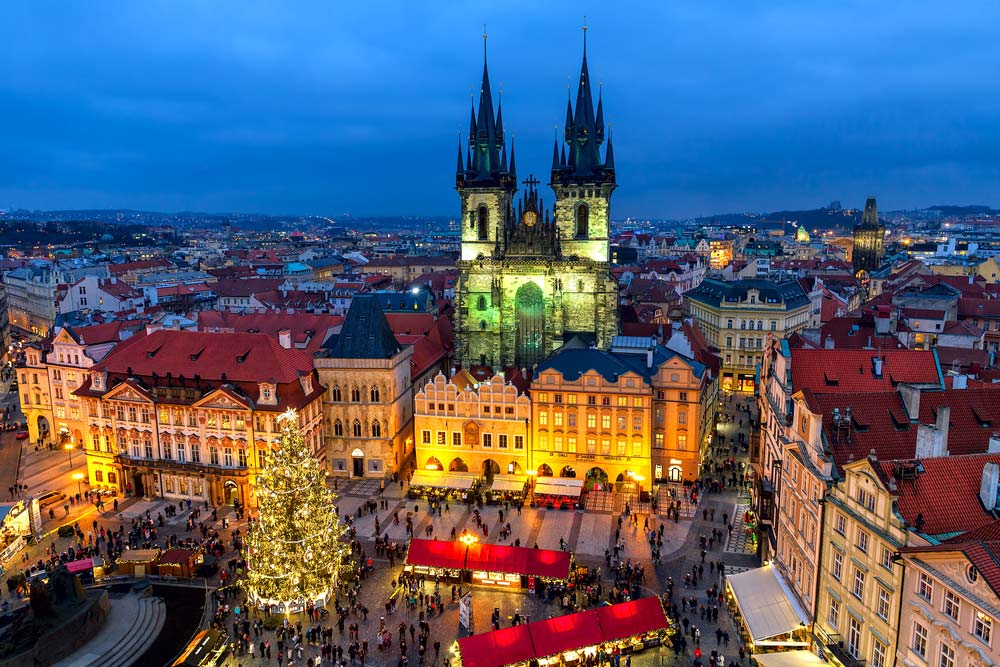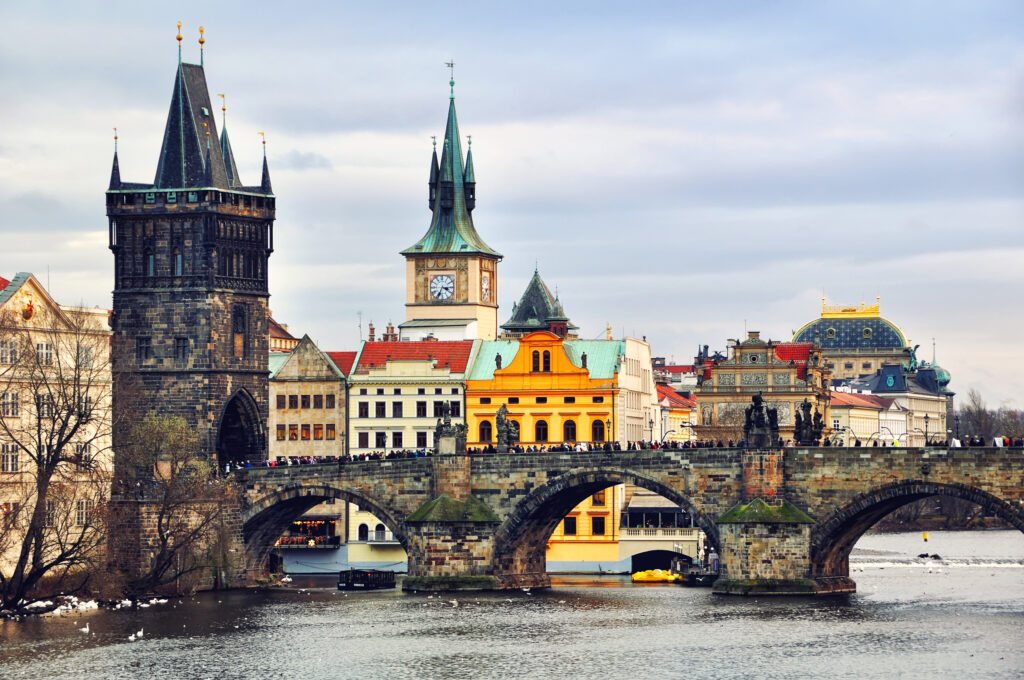

The beating heart of Central Europe, the Czech Republic has played an essential part in the region’s history. The Republic has influenced architecture, politics, art, music, science and literature. However, the country only officially came into being in 1993 after the ‘Velvet Divorce’ divided Czechoslovakia into two separate republics. Prague , the country’s attractive capital, is known as the ‘City of 1,000 Spires’. The city is a fascinating blend of Gothic churches, Renaissance and baroque buildings, and neoclassical, art nouveau and Cubist structures.


As one of the largest cities in Europe, Prague offers many choices to keep you entertained. Visit the Municipal House for a pure example of a grandiose art nouveau building. Stimulate your creative side with a trip to the Veletrzni Palac. Arguably one of the best museums in Prague, it houses an astounding collection of art from the 19th to the 21st century. Marvel at the stunning architecture of the St Vitus Cathedral. The largest church in Prague, and the historic burial place of the former Kings.
Take an early morning walk across Charles Bridge and kiss the feet of the saints of your choice, visit Wenceslas Square and see the world’s only Cubist lamppost just around the corner. Delve into the medieval lanes of the Old Town and watch the hour strike at the 15th-century Astronomical Clock. Then head for the Castle District for spectacular views. Take time to relax and jump on a tram, head to a park, or perhaps a local restaurant and try traditional dumplings followed by a frothy pilsner during your exciting Czech Republic adventure tour.
Following the First World War, the closely related Czechs and Slovaks of the former Austro-Hungarian Empire merged to form Czechoslovakia. After World War II, a truncated Czechoslovakia fell within the Soviet sphere of influence. In 1968, an invasion by Warsaw Pact troops ended the efforts of the country’s leaders to liberalise Communist party rule and create “socialism with a human face.” Anti-Soviet demonstrations the following year ushered in a period of harsh repression. With the collapse of Soviet authority in 1989, Czechoslovakia regained its freedom through a peaceful “Velvet Revolution.” On 1 January 1993, the country underwent a “velvet divorce” into its two national components, the Czech Republic and Slovakia.
The Czech Republic is situated approximately in the geographical centre of Europe. It is landlocked, 326 km from the Baltic and 322 km from the Adriatic. It shares borders with Germany, Poland, Austria and Slovakia. The highest point of elevation is the peak of Mt. Snezka at 1,602 metres above sea level. The lowest is near Hrensko, where the River Labe leaves Czech territory (117 metres above sea level). The climate is temperate with cool sunny summers and cold, cloudy, humid winters.
Visit www.worldclimate.com to get an idea of what the weather will be like on your trip.
Most nationalities (including citizens of the EU, Australia, New Zealand, Canada and the US) do not need a visa to enter the Czech Republic. If your nationality is not listed please consult your nearest Czech embassy or consulate before you travel.
The monetary unit in the Czech Republic is the Czech crown or koruna (Kc). For up to date exchange rates with your own currency visit www.oanda.com or www.xe.com.
The best place to change money in the Czech Republic is at banks and they are normally open Monday – Friday 8am – 5pm. There are many ATM’s where you can obtain Czech crowns cash using credit and debit cards.
A service charge is rarely added to restaurant bills. Give a tip for good service directly to the waiter when you pay your bill. As a rule of thumb, round up to the next multiple of 10Kc.
Most people find the Czech Republic very friendly and safe and feel quite comfortable wandering around alone during the day. However, as with any area you are not familiar with it is recommended that you exercise more caution at night especially if you are a lone female.
Most meals are included when camping (please see your tour dossier for a complete breakdown of meals included). Breakfasts can be basic so if you tend to get hungry it may be a good idea to buy some fruit or snacks to eat during the day. All other meals, extra snacks and drinks on the tour are at your own expense.
Ask your tour leader if they can recommend any restaurants in the area to suit your taste or budget or have fun exploring independently.
Food in the Czech Republic tends to revolve around pork, gravy, dumplings and pickled cabbage. Popular street snacks include bramborak, a potato pancake with flecks of bacon and smazeny syr – a slab of melted cheese fried in breadcrumbs and served in a toll with tartar sauce. Most pubs serve a menu of basic hot dishes. Most lunch time menus start with soup, one of the country’s culinary strong points. Main course are generally based on pork (veprovy) or beef (hovezi), you could also sample wild boar (kanci maso) or duck (kachna) which are usually delicious. Main course are served with different varieties of dumpling (knedilky) or vegetables.
The Czech Republic tops the world in the beer consumption league tables, and there are many delicious brands to try at cheap prices.
Vegetarians will find no shortage of fresh salads on offer.
230v sockets that differ to the rest of Europe. The grounding is accomplished with a round male pin permanently mounted in the socket and therefore although the plugs are two pronged they must have the corresponding female contact to accept the grounding.
The time difference in Czech Republic is GMT/UTC + 1. For other time differences please visit www.timeanddate.com
We are passionate adventure travelers who want to share the world and our travel experiences with everyone…
This website uses cookies so that we can provide you with the best user experience possible. Cookie information is stored in your browser and performs functions such as recognising you when you return to our website and helping our team to understand which sections of the website you find most interesting and useful.
Strictly Necessary Cookie should be enabled at all times so that we can save your preferences for cookie settings.
If you disable this cookie, we will not be able to save your preferences. This means that every time you visit this website you will need to enable or disable cookies again.
